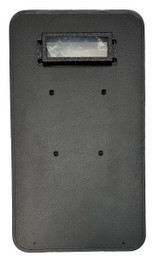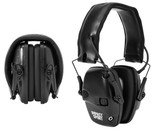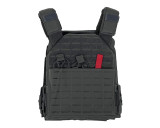Demystifying Riot Gear: Composition and Selection Guide
In today's complex world, the need for reliable riot gear has become increasingly evident. Whether you're a law enforcement professional, a protester, or someone concerned about personal safety during civil unrest, understanding what riot gear is made of and how to choose the right equipment is paramount. This comprehensive guide aims to unravel the composition of riot gear and provide insights into making informed choices.
Understanding Riot Gear Components
1. Protective Materials:
Polycarbonate: Shields and visors often utilize polycarbonate, a durable and transparent thermoplastic. It provides a balance between impact resistance and visibility.
Nylon and Polyester Fabrics: Riot suits often incorporate high-strength nylon or polyester fabrics for flexibility, comfort, and resistance to abrasion.
Kevlar and UHMWPE: These materials are commonly used in riot helmets, providing ballistic resistance without excessive weight.
2. Protective Layers:
Riot gear is often designed with multiple layers to disperse and absorb the energy from impacts. These layers may include foam padding, gel inserts, or even additional ballistic layers.
3. Reinforcements:
Critical areas like joints and stress points are reinforced to ensure longevity and effectiveness. Reinforcements are commonly made from durable materials like leather or high-density plastics.
Key Riot Gear Components
1. Helmets:
Helmets are typically made from high-strength materials like Kevlar or UHMWPE. Look for helmets with an adjustable inner harness for a secure and comfortable fit.
2. Shields:
Shields often have a polycarbonate outer layer for visibility and impact resistance. The frame is typically made of lightweight but durable materials like aluminum or high-strength plastics.
3. Body Armor:
Riot suits incorporate body armor made from a combination of materials, including ballistic fabrics and impact-resistant padding. The choice of materials depends on the intended use and the level of protection required.
4. Batons and Sticks:
Riot batons are usually made from materials like polycarbonate, fiberglass, or high-strength plastics. The focus is on providing a lightweight but sturdy tool for crowd control.
5. Gas Masks:
The mask itself is often made from rubber or other flexible materials, while the filters are composed of activated carbon and other materials to provide protection against various gases.
How to Choose the Right Riot Gear
1. Assess Threat Levels:
Consider the potential threats you may face. Riot gear comes in different levels of protection, so understanding the anticipated risks is crucial.
2. Mobility and Comfort:
Opt for gear that allows for maximum mobility without compromising protection. Adjustable straps, breathable materials, and ergonomic designs contribute to comfort.
3. Visibility:
Clear visibility is essential, especially for law enforcement. Choose riot gear with high-quality visors or shields that offer optimal clarity.
4. Durability:
Riot gear should be able to withstand repeated use and exposure to harsh conditions. Look for gear with reinforced seams, high-quality stitching, and durable materials.
5. Weight:
While protection is crucial, the weight of the gear can impact mobility and endurance. Find a balance between protection and a manageable weight.
6. Versatility:
Consider whether the gear can be easily adapted to different situations. Versatile riot gear may include modular components or adjustable features.
7. User-Friendly Features:
Look for user-friendly features such as quick-release mechanisms, easy adjustments, and efficient storage options.
8. Certifications:
Ensure that the riot gear meets relevant standards and certifications. This ensures that the equipment has undergone rigorous testing for effectiveness.
9. Budget Considerations:
Riot gear comes at various price points. While quality is crucial, consider your budget and look for gear that provides the best value for your investment.
Conclusion:
Choosing the right riot gear requires a thoughtful consideration of materials, components, and intended use. By understanding the composition of riot gear and evaluating key factors, you can make informed decisions that enhance your safety and preparedness in situations where riot gear is necessary. Remember, the right riot gear is an investment in your protection and should be chosen with careful consideration of your unique needs and circumstances.
Recent Posts
-
Understanding Ballistic Shield Ratings and Their Applications
The Trusted Name in Tactical Defense - BattleSteel® When it comes to protecting those who protect us …2025-04-19 -
The Importance of Hearing Protection in Tactical Environments
The Legacy of BattleSteel® BattleSteel® is a trusted name in the world of tactical defense equipment …2025-04-14 -
How to Properly Fit and Wear a Plate Carrier
About BattleSteel and Their Mission BattleSteel is a trusted name in the tactical gear industry, ren …2025-04-11


